No one! There’s no ATC service across the entire country, there’s a seemingly endless list of surface-to-air weaponry they might start shooting at you if you fly too low, and if you have to divert then good luck with the Taliban.
US operators can now overfly Afghanistan
The US FAA has just published a new SFAR for Afghanistan which amends its airspace warning for the country. US operators are now permitted to overfly the OAKX/Kabul FIR at FL320 and above.
Previously, flights were only allowed on airways P500/G500 in the east of the country. This made more sense from an airspace-risk point of view, as flights on these routes transit Afghan airspace only very briefly.
But now, if you’re a US operator, you’re no longer limited to those two airways – you can fly where you like across that big red blob as long as it’s at FL320 or above.
The US are not the only ones who have eased their airspace warning in this way. EASA also recommend FL320 or above, and Germany say FL330 or above. All the other countries who regularly issue airspace warnings – France, UK, Italy, and Canada – say that overflights should only be on those P500/G500 airways.
Why the change?
To understand the rationale behind the FAA’s easing of the airspace warning, the place to head is the “Discussion of the Final Rule” section in the SFAR.
Here’s a summary:
- Essentially, the FAA think the only risk at the higher flight levels is the lack of ATC.
- After the Taliban takeover of Afghanistan, ICAO made contact with Afghanistan’s CAA. Together with neighbouring ANSPs and IATA, they published a Contingency Plan for the resumption of overflights of the OAKX/Kabul FIR.
- With this specific risk diminished, the FAA now allows US operators to overfly Afghanistan at FL320 and above.
- The FAA still considers altitudes below FL320 hazardous for flights due to ongoing security risks from Taliban and ISIS. They cite the possibility of access to various weapons by terrorist groups, including MANPADS. Cross-border attacks into Pakistan by VEOs pose additional risks below FL320.
How do the Contingency Procedures work?
You can find these on the Afghanistan CAA homepage, or by clicking below:
This Contingency Plan is activated by Notam, and applies when the Kabul FIR is unattended – which has been the case for some time now.
In a nutshell it relies on adjacent FIRs coordinating with one another, and with aircraft to make sure they follow assigned routes and assigned levels while transiting Afghan airspace to reduce collision risk.
They are effectively broken down into two sections – lower airspace (FL160 – FL290) and upper airspace (FL300 – 510).
Lower Airspace
We’re not really interested in this, because we don’t want to fly at these lower levels! But anyway, here’s how it works:
- OAKB/Kabul, OAMS/Mazar-e-Sharif and OAHR/Herat airports will all provide surveillance services in their terminal areas.
- When outside them, you must follow a published low-level route. When descending or climbing, remain right of track unless you’re below MSA on an IFR procedure. You’ll also need to make TIBA broadcasts on 125.2.
Upper Airspace
OK, the bit we’re interested in!
The Contingency Plan mentions all the available routes, and the Notams make it clear what levels are available:
OAKX G0306/23 - ALL OVER FLIGHTS SHALL USE THE FOLLOWING LATERALLY DE-CONFLICTED HIGH ROUTES (HIGH SECTOR) STARTING AT FL360-FL510 EXCEPT ON M875/L509 ROUTES SHALL USE FL310-FL510 AND P500 SHALL USE FL300-510 TRANSMISSION SHALL TAKE PLACE EVERY 5 MINUTES ON TIBA FREQ 125.2MHZ FOR THE TEMPORARY PURPOSE ONLY.) 1.FIRUZ-P500-MOTMO(FL300-FL510) 2.AMDAR-M875-TAPIS-L509-LAJAK(FL310-FL510) 3.LEMOD-N644-DOBAT(FL360-FL510) 4.RANAH-L750-BIROS(FL360-FL510) 5.PAMTU-P628-ASLUM(FL360-FL510) 6.SOKAM-UL333-SERKA(FL360-FL510). 10 JUL 06:50 2023 UNTIL 05 OCT 23:59 2023 ESTIMATED. CREATED: 10 JUL 11:34 2023
So here’s what that looks like:
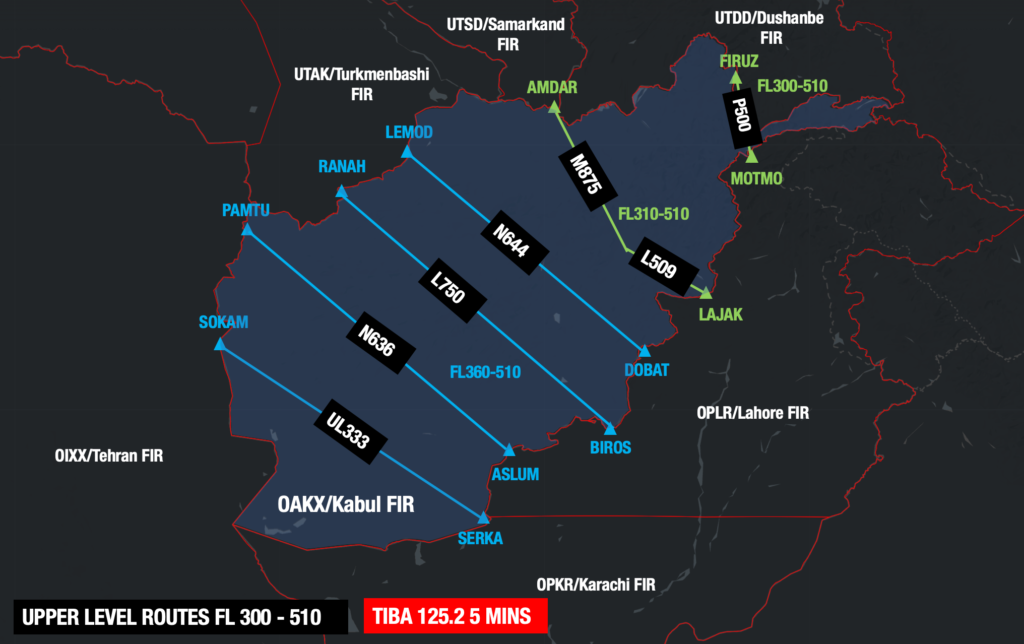
- These are bi-directional routes, and only available between certain levels (as per the map above!).
- Try and avoid using FL300. It is sometimes reserved for military traffic as advised by Notam.
- On entry to the Afghan airspace: adjacent FIRs will apply in-trail spacing of 15 mins on each route at each level. The routes provide at least 50nm lateral spacing. As per usual, westbound traffic should be at an even level, and eastbound at an odd one.
- While inside the Class G airspace: TIBA procedures will apply at all times on 125.2. Expect to contact the next FIR at least 10 minutes before the boundary on VHF.
- The good news is that the ‘up-stream’ FIR will also coordinate with the ‘downstream’ FIR to let them know you are coming.
Other Gotchas
- Despite being Class G, flight plans must still follow the rules found in Afghanistan’s AIP. This includes the requirement for RNAV10 or better, and the submission of your plan to the Kabul FIR via AFTN.
- Priority will be given to ‘long haul’ international flights in the higher levels. Regional and domestic operators needs to remain in lower airspace.
What are most operators doing?
Avoiding Afghanistan! Just like they did before.
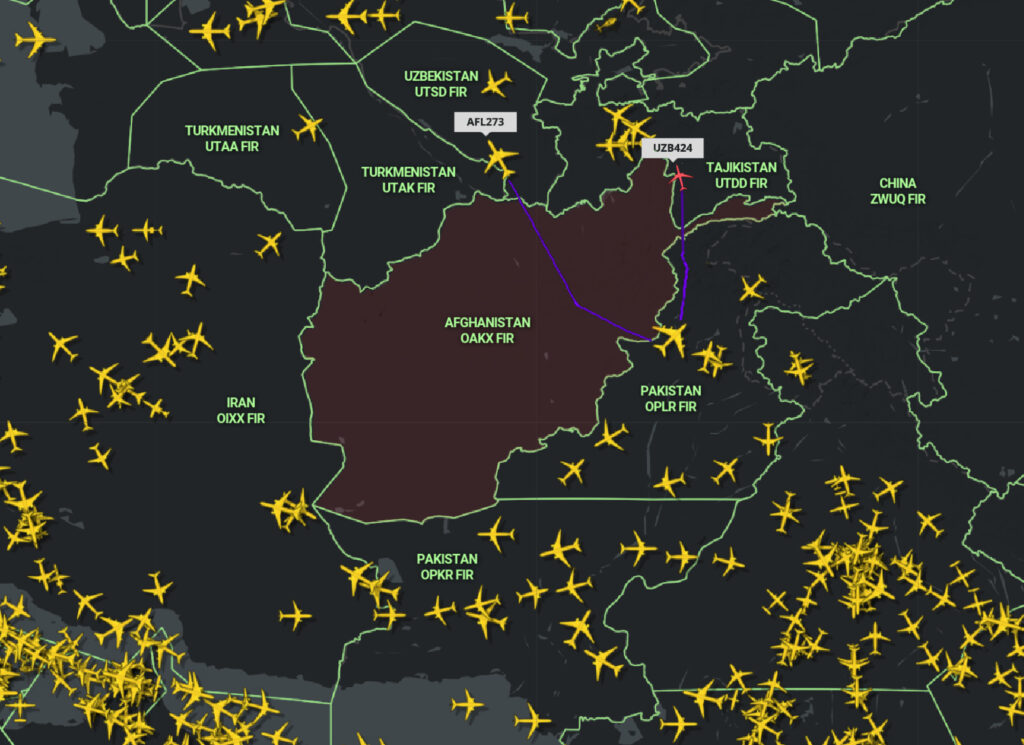
Some are using the LAJAK-AMDAR routing (Aeroflot), some are still using the good old P500 airway in the east of the FIR (Uzbekistan Airways), but most are avoiding the airspace completely.
- Most major international airlines still appear to be avoiding Afghanistan’s airspace for overflights, although some are still using airways P500/G500 in the east of the country like they did before.
- Most traffic continues to route south via Pakistan/Iran, or even further south via the UAE and Arabian Sea.
- There are risk warnings to consider for the airspace on this southerly routing too. Several countries have warnings in place for Iran’s airspace (the OIIX/Tehran FIR), including a total flight ban by the US. The southern part of Saudi Arabia’s airspace (the OEJD/Jeddah FIR) carries risk as well, although there have been no reported drone strikes from Yemen in the past year.
- To the north of Afghanistan: the options for overflights are fairly limited – via Turkmenistan, Uzbekistan and Tajikistan, avoiding Russia – potentially useful if operating from Europe to the Far East (China, Hong Kong, Japan, etc.)
Should I overfly Afghanistan?
Despite there being contingency routes now in place, and despite the easing of the airspace warning by the FAA, there are still several risks here: lack of ATC, and serious safety and security risks at both the lower flight levels and on the ground.
If you have an engine failure or depressurization, will you be able to stay above FL320 all the way across the FIR? If you had to divert to an airport in Afghanistan, how confident would you be that you would be able to get out again in one piece?
For more info, check Safeairspace.net – our Conflict Zone & Risk Database.
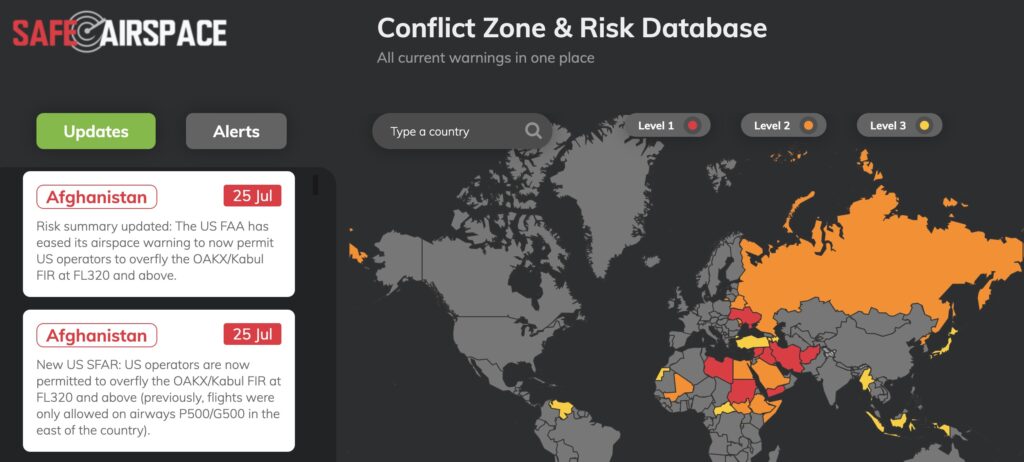
More on the topic:
- More: July 2024: Afghanistan Overflight Update
- More: Afghanistan Update – September 2021
- More: The India-Pakistan Conflict: Impact on Flight Operations
- More: Afghanistan: Do Not Fly
- More: FAA issues Emergency Order for Afghanistan (Updated)
More reading:
- Latest: Teterboro: RIP the RUUDY SIX
- Latest: 400% increase in GPS Spoofing; Workgroup established
- Latest: GPS Spoofing WorkGroup 2024
- Safe Airspace: Risk Database
- Weekly Ops Bulletin: Subscribe
- Membership plans: Why join OPSGROUP?



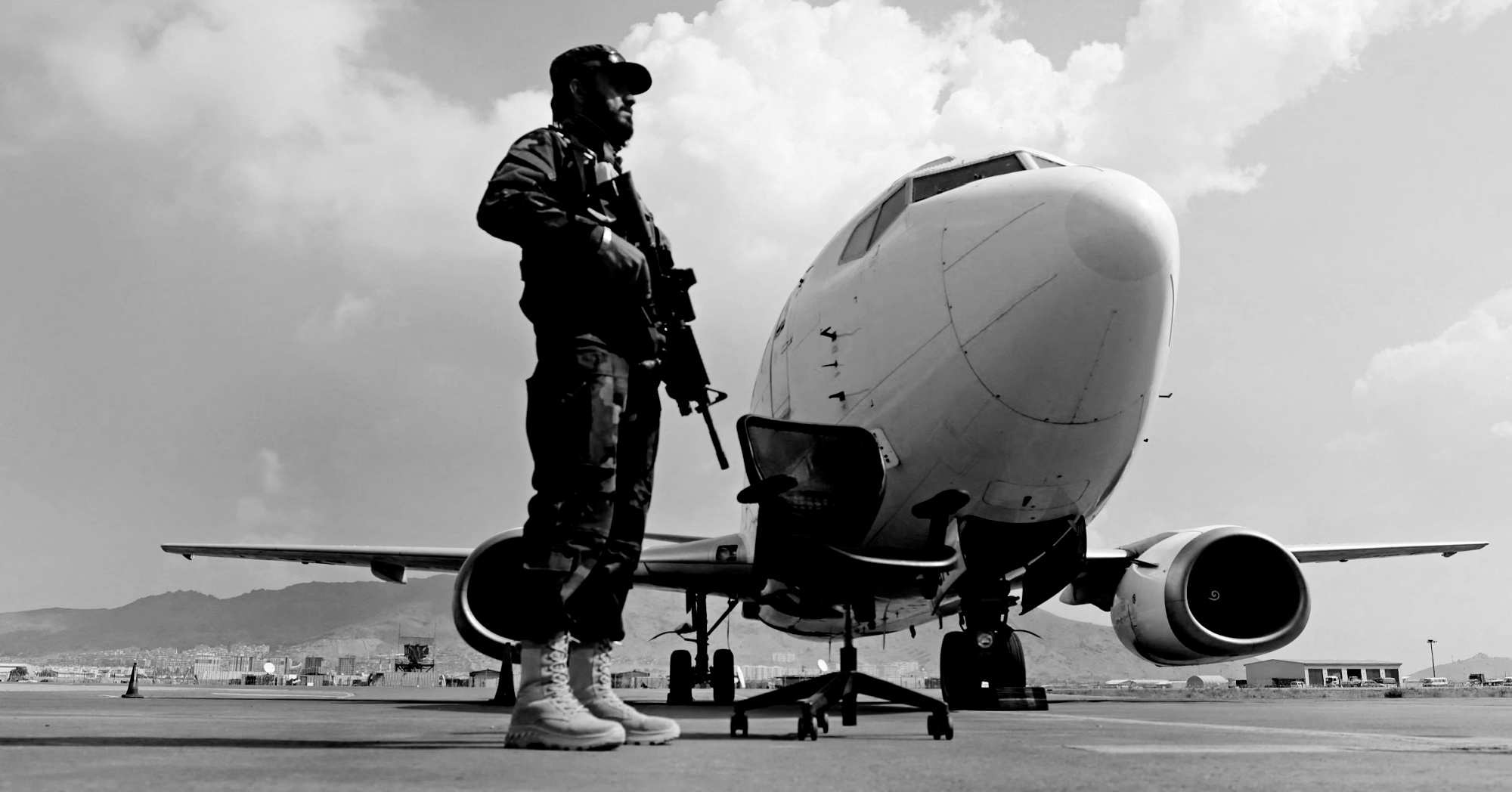
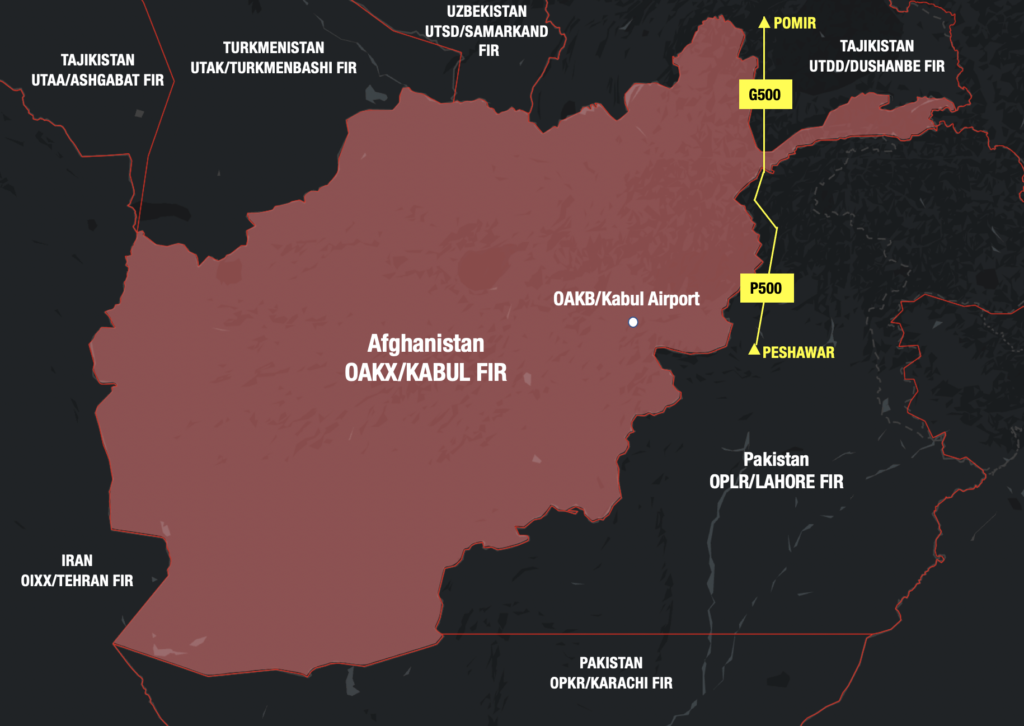
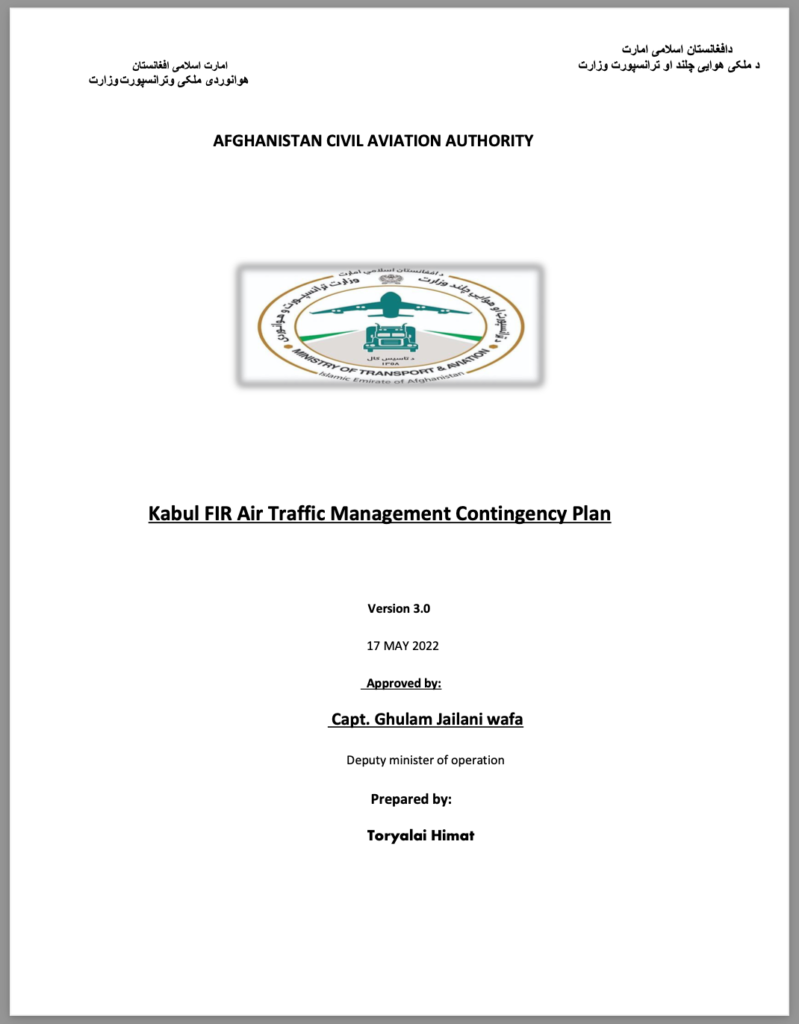







 Get the famous weekly
Get the famous weekly 





